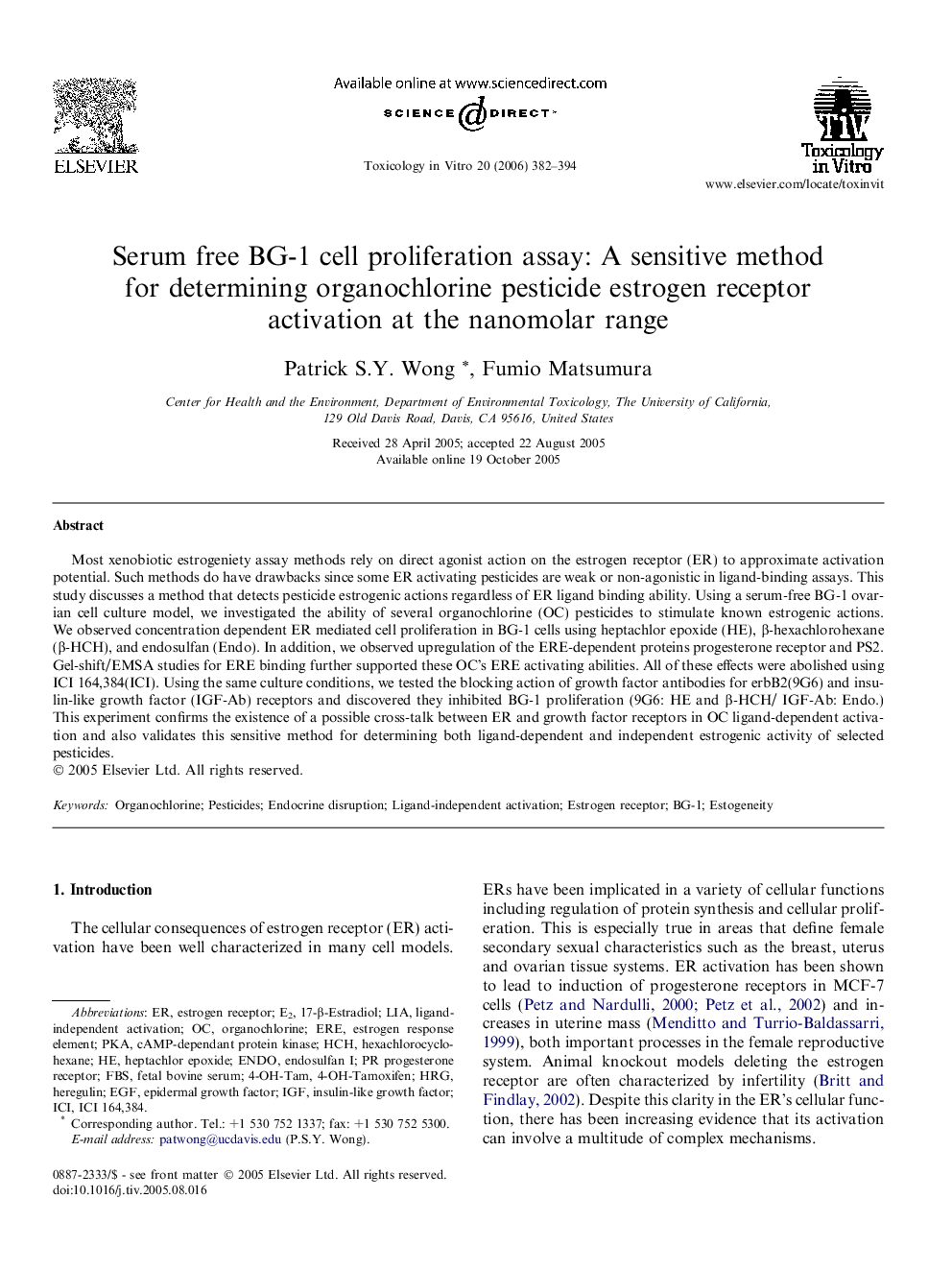| Article ID | Journal | Published Year | Pages | File Type |
|---|---|---|---|---|
| 2603914 | Toxicology in Vitro | 2006 | 13 Pages |
Most xenobiotic estrogeniety assay methods rely on direct agonist action on the estrogen receptor (ER) to approximate activation potential. Such methods do have drawbacks since some ER activating pesticides are weak or non-agonistic in ligand-binding assays. This study discusses a method that detects pesticide estrogenic actions regardless of ER ligand binding ability. Using a serum-free BG-1 ovarian cell culture model, we investigated the ability of several organochlorine (OC) pesticides to stimulate known estrogenic actions. We observed concentration dependent ER mediated cell proliferation in BG-1 cells using heptachlor epoxide (HE), β-hexachlorohexane (β-HCH), and endosulfan (Endo). In addition, we observed upregulation of the ERE-dependent proteins progesterone receptor and PS2. Gel-shift/EMSA studies for ERE binding further supported these OC’s ERE activating abilities. All of these effects were abolished using ICI 164,384(ICI). Using the same culture conditions, we tested the blocking action of growth factor antibodies for erbB2(9G6) and insulin-like growth factor (IGF-Ab) receptors and discovered they inhibited BG-1 proliferation (9G6: HE and β-HCH/ IGF-Ab: Endo.) This experiment confirms the existence of a possible cross-talk between ER and growth factor receptors in OC ligand-dependent activation and also validates this sensitive method for determining both ligand-dependent and independent estrogenic activity of selected pesticides.
